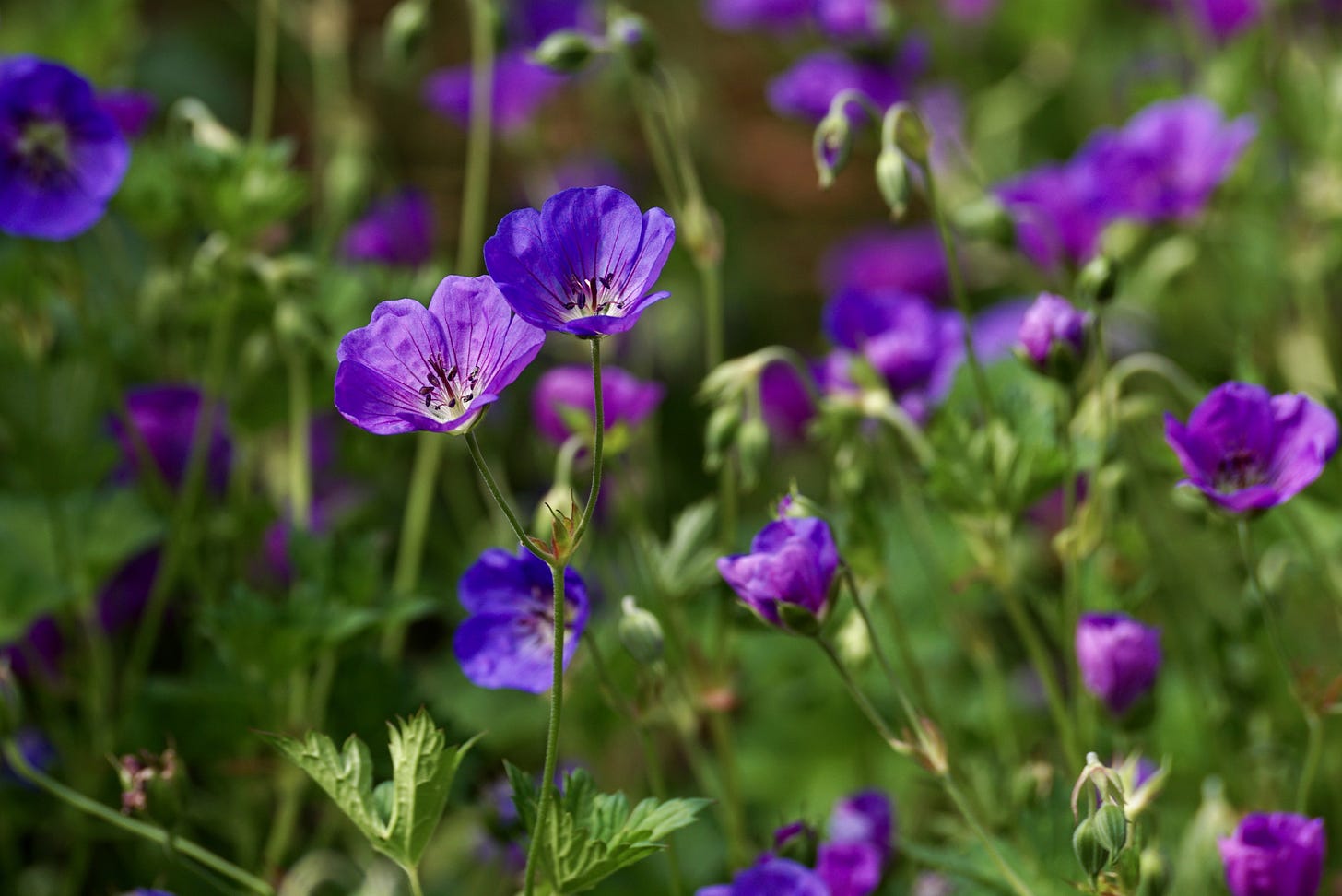Of Geranium "Rozanne"
To be cultivated as a welcome intruder
While my aversion to annual plants still lingers (I am only now starting to timidly appreciate the summer exuberance of nasturtiums), I have gradually come to change my perspective on other “intermittent” plants, namely those that are absent from the garden at certain times of the year, such as bulbous and deciduous herbaceous perennials. Geranium 'Rozanne' starts growing its first leaves again in the spring warmth, after winter dormancy. I must confess that if growing conditions and garden style permit, I always strive to include it, as a soberly beautiful herald of the ever-turning cycle of the seasons.
I have experimented with growing G. “Rozanne” in south-facing gardens during summers marked by the unrelenting Mediterranean sun. In such conditions, it exhibits commendable performance, maintaining a compact growth habit and producing modest yet tasteful blooms, while also displaying a moderate tolerance to drought (also being grown in a strongly draining substrate).
However, from what I have been able to observe, G. “Rozanne” is a plant that thrives when placed in half-shade and is at its best in dappled shade conditions, in areas partially covered by the canopy of trees. Under these circumstances, the plant takes on a light structure, internodes extend, and G. “Rozanne” stretches, elongating by crawling on the ground or leaning on other plants, which it uses as support.
Given this loose nature, lacking defined volume, and being, among other things (of course), a deciduous species, I do not usually employ it as a structural element in my displays. Instead, I prefer to distribute a few specimens here and there among other plants, typically in low to medium-low borders, and then watch its leaves and flowers appear as welcome intruders among the summer vegetation.
Pairing the violet-hued blooms of G. “Rozanne” with white-flowered plants yields a mutually enhancing effect. For instance, I have found it particularly effective when planted alongside Hydrangea species boasting pure white inflorescences.



Thanks.